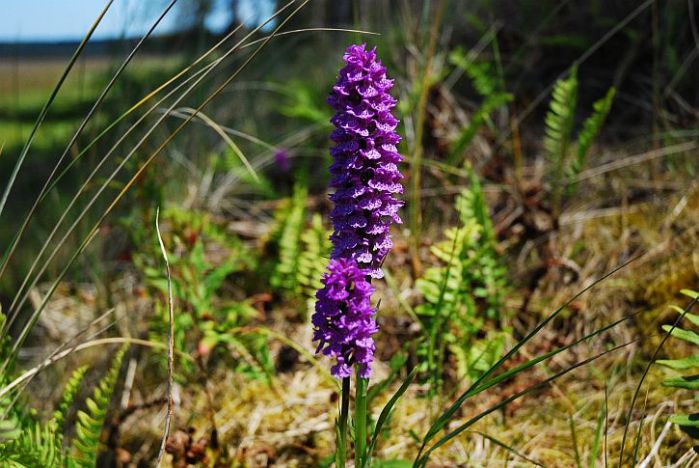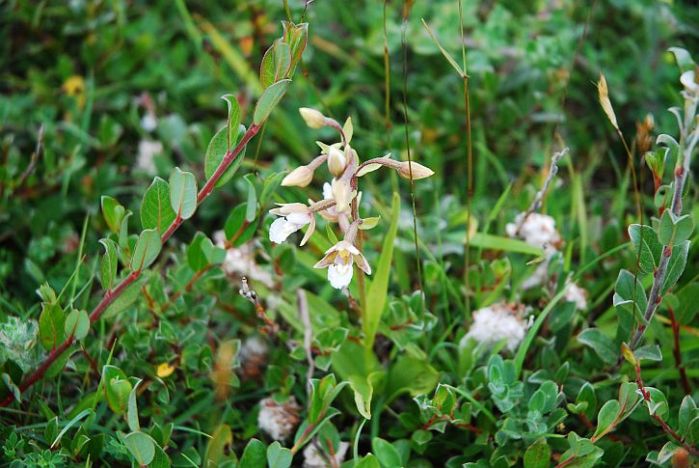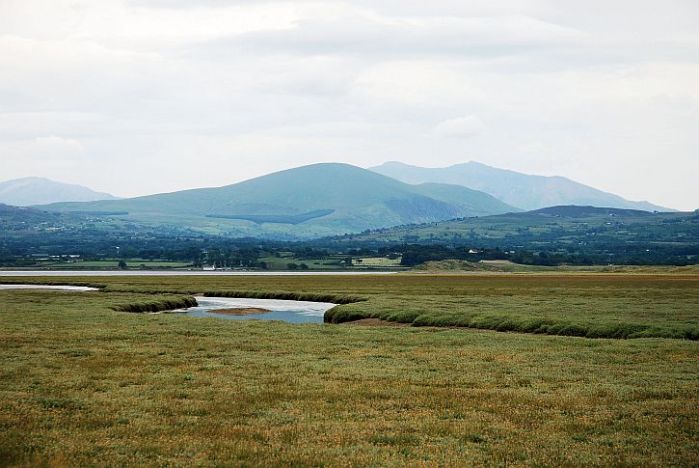Newborough Warren is a very special place, a wilderness of sand dunes, grassland, and damp hollows (or ‘slacks’) crucial for threatened species such as skylark, dune pansies and marsh orchids. It is one of the wildest places I have walked in where the only sound in high summer is the song of a multitude of invisible larks. This is a place that feels far from machinations, procedures, assessment and accounting.
The rising hills, the slopes,
of statistics
lie before us.
the steep climb
of everything, going up,
up, as we all
go down.
In the next century
or the one beyond that,
they say,
are valleys, pastures,
we can meet there in peace
if we make it.
To climb these coming crests
one word to you, to
you and your children:
stay together
learn the flowers
go light
– Gary Snyder, ‘For the Children’
We explored this place on a sultry, overcast day in a circuitous ramble that began at the Marram Grass statue car park and followed the path towards the forest before branching off through a gate into the dunes to the left. Then we headed out towards the strait, following marker posts all the way up across the dunes and down into the slacks.
For centuries rabbits have grazed here (hence the term ‘Warren’), helping to maintain a species-rich habitat. In the 1950s myxomatosis drastically reduced their numbers leaving the dunes in a vulnerable condition, no longer able to support plants and animals. However, rabbit numbers are slowly increasing, and they now graze side by side with horses, helping to keep the dunes healthy by controlling unwanted vegetation.
Semi-wild horses graze on the Warren
This is the largest area of dunes in the British Isles, the result of significant environmental change in the 14th century. At that time Newborough area was an area of rich farmland, the prosperous settlement of Newborough populated by people evicted from Llanfaes, in the north of the island, by Edward I to make way for the construction of Beaumaris castle. But, in the 14th century a series of violent storms buried a large portion of this area under sand dunes. The residents feared that the dunes would completely swallow the town, prompting Elizabeth I to enact a law protecting the marram grass, the roots of which help to stabilize the dunes. This stopped the advance of the dunes and also provided raw material for a new industry in the town, the weaving of marram grass leaves to form mats.
Rabbits soon colonized the dunes, giving rise to the name Newborough Warren and providing locals with another valuable resource – at one time, as over 100,000 rabbits a year were being taken from the warren.
Now Newborough Warren is a National Nature Reserve, consisting of a large expanse of sand dunes, saltmarsh and mudflats. It is the dune slacks – areas which are submerged by winter rains, but drying out during the summer months – which are of most interest to those wishing to see the many wild-flowers for which this site is renowned. The slacks provide the ideal habitat for vast colonies of Northern Marsh Orchids and Marsh Helleborines. We were keen to find some of these rare flowers. They didn’t take much finding.
Northern Marsh Orchid
Pyramidal Orchid
White Common Spotted Orchid
Marsh Helleborine
There’s a lot of glamour and mystery associated with wild orchids, including the belief (which I adhered to) that they’re all rare and endangered. However, when I consulted Richard Mabey’s Flora Britannica, I discovered that although this is true of some species, others are, according to Mabey, ‘proving themselves highly adaptable and capable of moving into the most improbable habitats’ (he cites abandoned waste tips, old colliery land, reclaimed airbase runways and bunkers, motorway roundabouts and power station ash-tips).
Apparently, there are Bee Orchids here, too, but our chosen path through the dunes did not bring us to them. Nevertheless, scattered amongst the marram grass is a wide range of plants such as Dune Pansies, Sea Spurge, Rest Harrow and Viper’s Bugloss. Here’s a gallery of the flowers we chanced upon (hover for details; let me know of any mis-attributions):
As we worked our way over dune and through slack, it was interesting to come across areas colonised by a single large community of a particular plant, whether Helleborines, Orchids, Yellow Rattle or Sea Holly
A colony of Yellow Rattle clustered on the slope of a dune

A field of Sea Holly in one of the slacks
As we neared the shore of the Menai Strait and the ground grew damper, reeds and rushes began to predominate. With the mountains of Snowdonia brooding purple across the water in the heat haze, the landscape felt timeless, or out of time – no sign of human habitation or intervention, no sound but the larks’ song and the rustle of reeds shifting in zephyrs that eased in from the water’s edge.
At last we emerged from the dunes onto Llanddwyn, the beach beneath the mountains. There was no one there but us.











































































